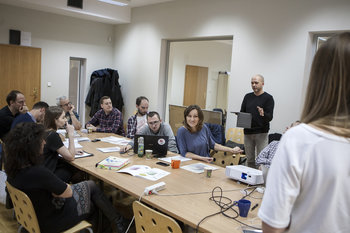
Candor
Candor is the practice of being forthcoming with information that may be useful to someone.You have some fuzz or something on your face.
Getting to the Point
Communicating in few words without filler.The project failed because the requirements made no sense whatsoever.
Making a Statements
Statements are unambiguous positions.The future has no place for burning carbon.
Plain Language
Language that is designed to be understandable to a broad language as opposed to obscure language mostly used by an industry, profession, organization or academic discipline.These nails help to hold the house up.
Indirect Language
Indirect language is communication that is long or that is purposely designed to be vague and open to interpretation.Well, of course I would like to attend but also I have so much work this weekend and Bobby has a soccer game that I wanted to see. So we'll see, it all depends on how things go with work and stuff.
Direct Criticism
People often make criticism indirect and constructive in order to avoid hurting people's feelings. However, there is a time and place for direct criticism.You're driving way too fast for this area, there are kids playing right over there.
Fear of Criticism
It is common to make communication incomprehensibly indirect on purpose because this is harder to criticize than a direct statement.We would implement the best practice which would be to conform to the standard and test against the specifications.
Tact
In some cases, direct communication can lack tact and consideration for the feelings of others.Look - that guy is so old!
High-Context Culture
A high-context culture is a culture that heavily relies on shared references. For example, Japanese culture and language that is known for its many layers of subtly that are difficult to understand without much experience in the culture. For example, the use of compliments to lodge a complain.Downstairs neighbor: I heard your son playing piano last night, he is really talented [to be interpreted as a complaint about noise as opposed to a compliment]
Low-Context Culture
A low context culture relies on directness as opposed to shared culture. This is often a practical thing such as a multicultural society where people may not have the same cultural references.New York City Concert Goer #1: This music is great.
New York City Concert Goer #2: Yeah totally.
New York City Concert Goer #2: Yeah totally.
Saving Face
Saving face is a culture where you are supposed to help others to avoid embarrassment. If you embarrass someone in a high context culture they may heavily resent you and conflict is likely.Thank you for your proposal, we will take it into consideration. [a soft way of saying no]
Reading Between the Lines
Reading between the lines is the ability to catch the true meaning of indirect communication that includes subtle hints.A: Thank you for your proposal, we will take it into consideration.
B: Well, if you change you're mind, this month is our biggest sale of the year where I could probably get you up to 40% off but it ends in 4 days.
B: Well, if you change you're mind, this month is our biggest sale of the year where I could probably get you up to 40% off but it ends in 4 days.
| Overview: Direct Communication | ||
Type | ||
Definition | Communication in clear terms that leaves no room for interpretation. | |
Opposites | Indirect communicationTactHigh-context CultureSaving Face | |
Related Concepts | ||










































